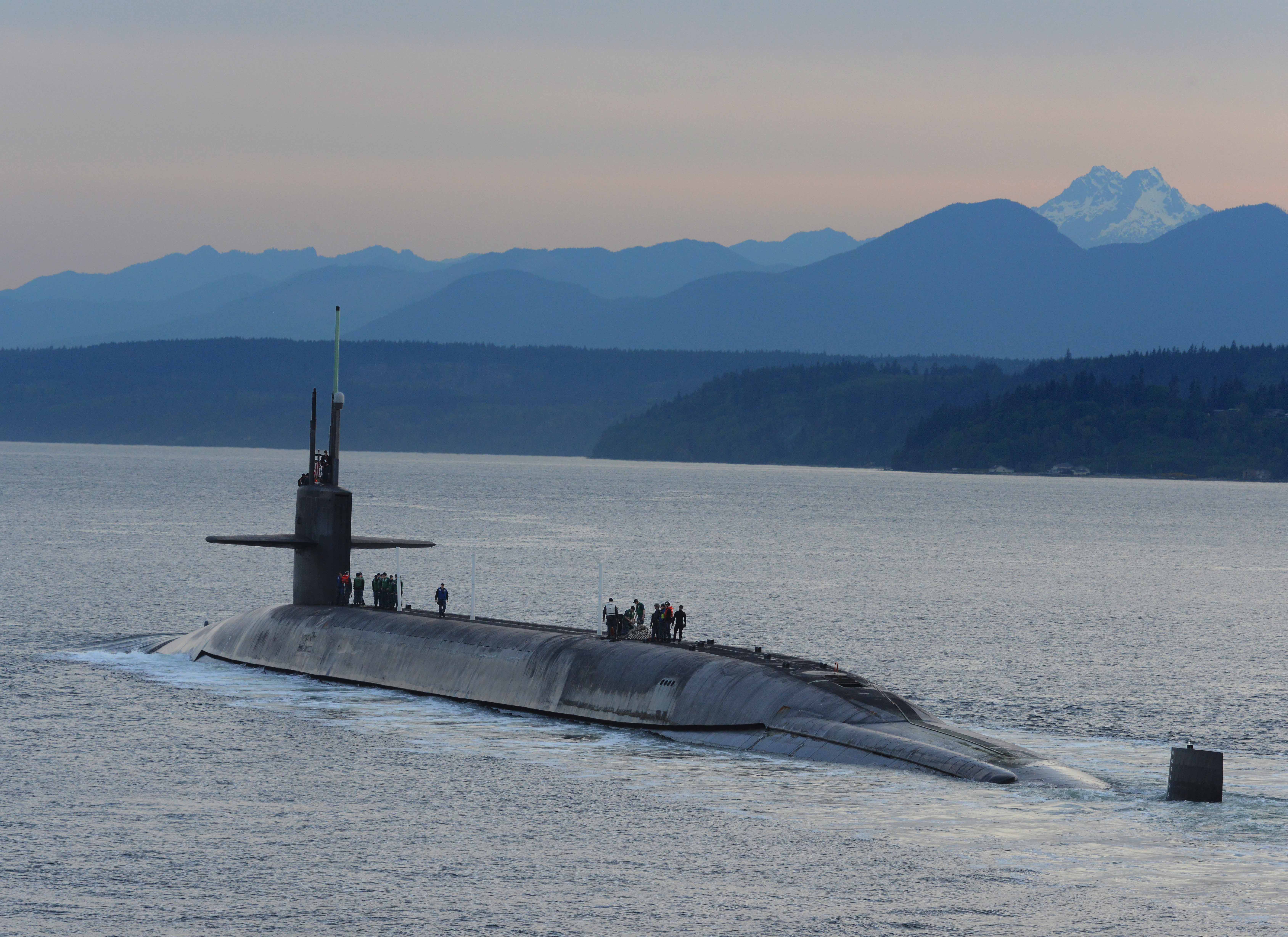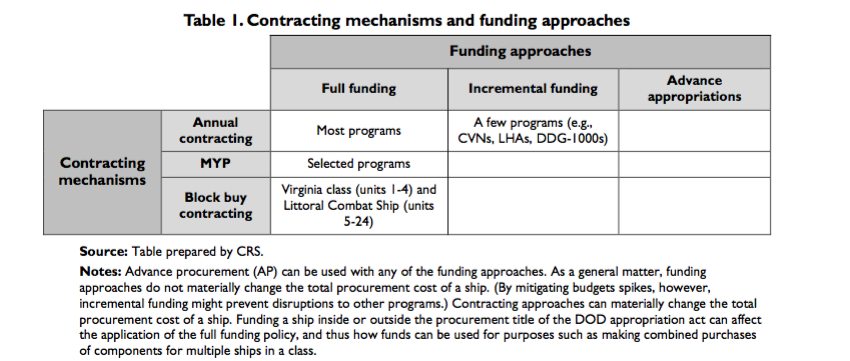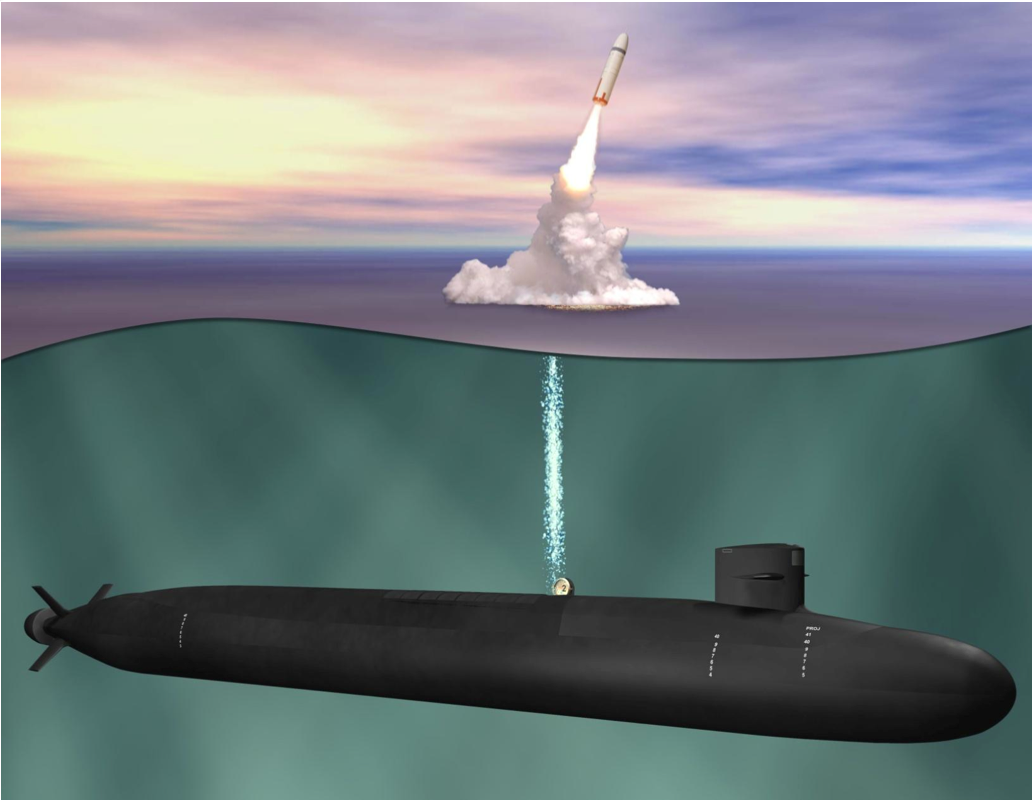
WASHINGTON, D.C. — A fund established last year to break out the Ohio-class Replacement nuclear ballistic missile submarine (SSBN) from the Navy’s traditional shipbuilding budget could cut the $100 billion price tag for the 12 boomers by up to 10 percent, according to estimates from the Congressional Budget Office.
The National Sea-Based Deterrence Fund would give the Navy the authority to purchase bulk materials for several boats at a time as well as give the service more flexibility on how its spends its money across the bulk of the program, Eric Labs an analyst with the Congressional Budget Office told a hearing before the House Armed Services seapower and projection forces subcommittee on Tuesday.
“The Navy’s cost estimate for the follow-on Ohio replacements — boats two through 12 — is $5.7 billion a ship. The CBO’s estimate is about a billion dollars higher,” Labs told the subcommittee.
“If you’re talking about a $6 billion submarine in round numbers you’re looking at $300 to 600 million savings per boat.”
Those numbers are based on savings data from a similar fund that was used to pay for the construction of two classes of Military Sealift Command ships, according to a report from Congressional Research Service’s Ronald O’Rourke referenced in testimony.
The fund for the MSC ships allowed the service to reduce costs by “ordering certain components of multiple ships in a shipbuilding program before some of the ships in question were fully funded—something that the Navy cannot do with a shipbuilding program funded through the Navy’s shipbuilding account unless the Navy receives approval from Congress to execute the program through a multiyear procurement (MYP) contract,” read the report.
“If the National Sea Based Deterrence Fund is located outside the procurement title of the annual DoD appropriations act, the Navy might be able to do something somewhat similar in using funds appropriated for the procurement of Ohio replacement boats.”
Funding the new boomers — scheduled to start construction in Fiscal Year 2021 — outside of the Navy’s traditional SCN funding has been supported by both the service and by comments in June by Deputy Secretary of Defense Bob Work.
Then, Work told the full House Armed Services Committee “in the past Congress has added money for [nuclear] strategic modernization during periods of these times of starting to recapitalize, and we hope that is going to happen again.”
 During the Tuesday hearing Labs said if the service were forced to pay for the new boats out of the traditional $16 billion-a-year shipbuilding accounts it could mean the Navy would have a 237 ship fleet in 2045 instead of its planned total of 305.
During the Tuesday hearing Labs said if the service were forced to pay for the new boats out of the traditional $16 billion-a-year shipbuilding accounts it could mean the Navy would have a 237 ship fleet in 2045 instead of its planned total of 305.
Chair Rep. Randy Forbes (R-Va.) and ranking member Rep. Joe Courtney (D-Conn.) — both with constituencies heavily invested in submarine construction — have championed the fund for more than a year as an alternative to funding the $100 billion program out of the Navy’s shipbuilding budget.
In June the pair won a crucial floor vote to keep the fund alive when House appropriators attempted to kill the account. The Tuesday hearing was part of an recent push from both members to extol the benefits of the fund beyond removing the financial burden from the service’s shipbuilding account.
“I think it’s plausible we can achieve efficiencies and savings if all of us in Congress worked with us to use the legislative that are already available in our tool box. Those tools include the authority to execute multiyear procurement contracts and incremental funding,” Forbes said at the top of the hearing.
“Looking at all pressures on the budget that money really matters especially since as the Ohio Replacement program ramps up.”
The funding strategy, however, would give Congress less control over the acquisition of the new boomers and put the service at risk of paying penalties to shipyards if it canceled multi-year contracts and — though the mechanism for the NSBDF has been established — the account is virtually empty.
Priority Program

The Ohio-class Replacement program is the Navy’s oft-stated number one acquisition priority and its massive budget outlay — in addition to the mandatory budget caps as a result of the Budget Control Act of 2011 — has put pressure on almost every other budget line in the service to ensure the funds to design and construct the new boats.
“They will get built,” said Rear Adm. William Lescher, the Department of the Navy’s (DoN) deputy assistant secretary of the Navy for budget during the service’s budget roll out in February.
“[But there’s] very much a concern the impact of the broader shipbuilding approach absent the relief that we think is required to do this.”
While a $5 to 10 billion is savings through the mechanism of the National Sea-Based Deterrent Fund is significant, Congress and the service may still need to find additional funds to mitigate a fiscal hit to the service.
In 2013, the Navy estimated it could need as much as $60 billion of the cost of the program over 15 years to prevent a drain on the shipbuilding account during the bulk of construction in the 2020s.
“The challenge to shipbuilding is longer term and bigger than even the budget control act. The solution is something that can’t wait until the 2020s,” Courtney said during the hearing.
“The time is now. We can’t put this off as a 2020s issue.”
In addition to the Ohio replacement, O’Rourke mentioned the multi-year and block-buy strategy — used for savings in buying Arleigh Burke-class guided missile destroyers (DDG-51) and Virginia-class nuclear attack boats (SSN-774) — could be applied to other ship classes like the emerging next generation TAO(X) fleet oiler and the next generation LX(R) amphibious warship.





